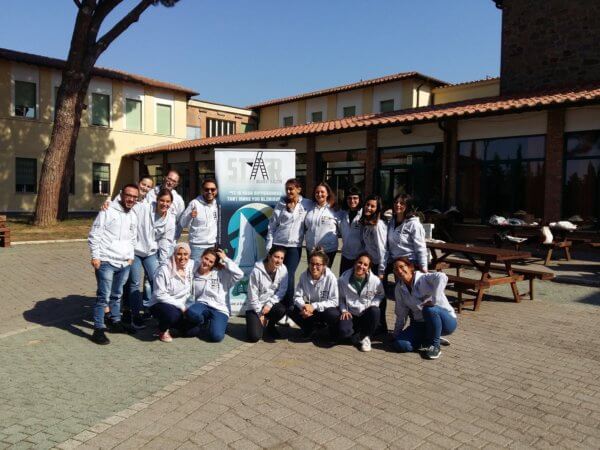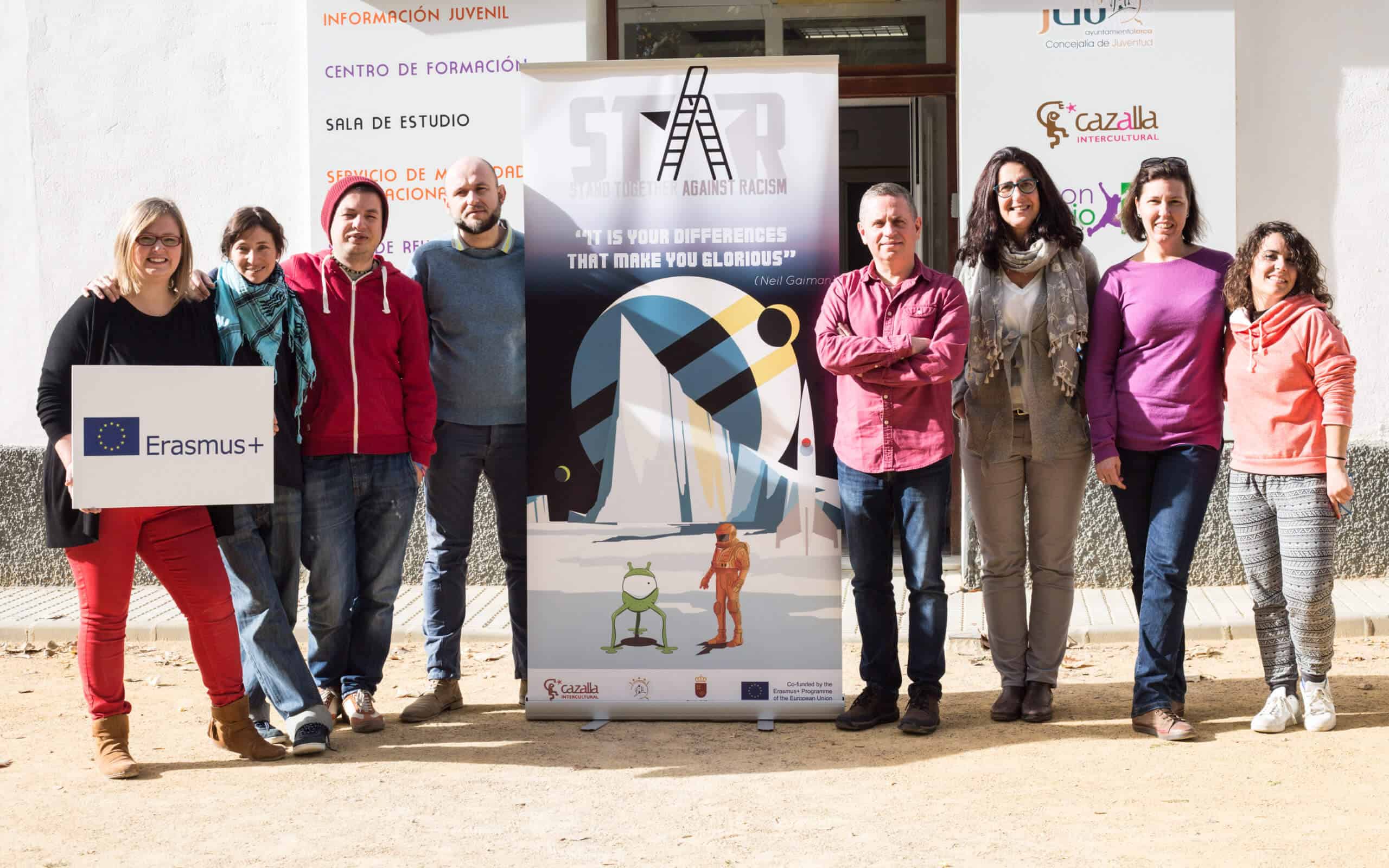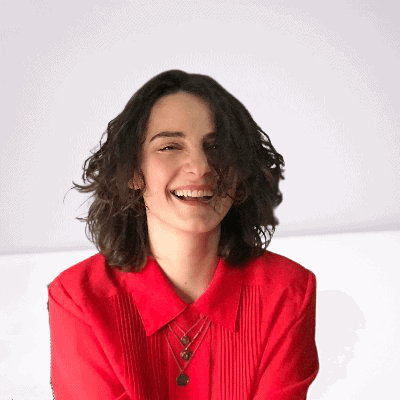Harmful, damaging behaviour against any race, is considered invisible racism and is unacceptable. Here, we discuss how we fight it together as one.
When you hear the expression “Invisible Racism” what comes first to your mind?
I, personally, was tricked by the word ‘invisible’, thinking that we are talking about racism that we cannot see at all. However, this is not the case.
Invisible racism describes all of the harmful, damaging behaviours which are considered normal and accepted by society.
So, the difference between what we all know and perceive as racism and invisible racism lays on their lines of tolerance.
To learn about this and more, marking the 21st of March, International Day for the Elimination of Racial Discrimination, Youth Time spoke to Aga Byrczek, and Silvia Volpi, representing Cazalla Intercultural respectfully Redu, both project partners of Invisible Racism- an NGO working through different angles to combat racism, invisible racism and raise awareness among people against these form of discrimination and the harm they cause in communities.
In this exclusive joint interview, among others, they explain how behaviours related to invisible racism, although not considered by many harmful, lead to exclusion, anxiety, and influence the general wellbeing.
When a Joke Causes more Harm than Laughter
In the beginning of our conversation, Volpi, trainer for the Council of Europe on Issues of Participation and Youth Policies and on Human Rights Education, gives a broader explanation about what invisible racism stands for.
“Some examples [of invisible racism] could be: telling racist jokes, or avoiding contact with people coming from different ethnic groups, by simply going to the other side of the street, or deciding not to date a person who is racialised.
“Those behaviours, although not considered by many harmful, lead to exclusion, anxiety, and influences wellbeing.”
According to her expertise, it is hard to define how invisible racism manifests itself, since it can be almost everything, it is very ambiguous, normalised and often unconscious.
“On the other hand, the consequences can be very damaging as well because we don’t give them importance.
“Just think of the possible consequences of a simple joke of three men from three different nationalities. Is this joke harmful?
“Probably, the consequence of this would be minimal, if any person who feels represented by the nationality which is ridiculed by the joke might feel a bit strange and that is all.”
And right now, she asks us to imagine that we face jokes about the different parts of our identity daily, and that we see people like us in the media presented as stupid and criminals, for example.
She adds: “And you cannot get any matches on Tinder, not knowing why. In the long run, the consequences of being exposed to this form of invisible racism, which can also be called microaggressions, can be severe.”
Microaggressions are influencing both mental and physical health, and their impact is correlated with the intensity of microaggressions and the existence of minimising factors.
“They are harmful when they are frequent and constant since they provoke permanent stress, and can lead to depression, guilt, anger, and number of physical illnesses.”
Reaching 1,500 Users Thanks to a Massive Learning Opportunity
She further describes the main focus of their activism and talks about offering training through courses like “Make it Visible”, which are approaches and activities on how to work with young people on the topic of invisible racism.
One important initiative is the STAR project.
“The STAR Project is quite complex in terms of target groups and ways how we reach people, and it is important to underline that we work both on the local level, in the cities where partner organisations are based, as well as at international and global level.
“On the local level we are working directly with young people with three main types of interventions – school workshops, summer camps and so called community meetings, which were created to offer a space for young people to discuss issues that they might not feel comfortable to discuss in the classroom.”

All of these experiences from the local level have been adapted at European and international level.
“We have developed a manual called CONSTELLATIONS where we have published all the tools and approaches developed and used at the local level, which can be downloaded from our webpage.
“Another activity that we have offered to the wide audience is the Massive Online Open Course, which is still online and anyone in any part of the world can subscribe and learn.”
This is a massive learning opportunity for the organisation, managing to reach over 1,500 users, and received very good feedback so far.
“And finally in April we will implement another training course, this time with the focus on the development of the trainers’ competences for all those who are interested to run anti-racist activities.
“In this way we hope to bring more people on board and equip participants with skills and tools, so the impact of the project will be greater and anti-racism will be mainstreamed in all the youth activities all over Europe.”
Countering Invisible Racism from Young People’s Life
Whereas Aga Byrczek, Project Co-ordinator and trainer, interested in inclusion, diversity, invisible racism and interculturality, digs more into the Stand Together Against Racism (STAR) Project – a three-year collaboration among four partners from Spain, Italy, Bulgaria and Poland, founded by the Erasmus+ programme.
Through preventive measures, youth work and non-formal education, it inspires to counter invisible racism and other forms of intolerance in the everyday lives of young people, as well as in the online channels.
“The project aims to counter invisible racism and other forms of intolerance in the everyday lives of young people, as well the ones online, through preventive measures, youth work and non-formal education.
“Most of the activities have been already implemented at local and European level, but if you want to know more about the project and to get one of the manuals we have elaborated to work on countering racism and invisible racism, you may visit our website.”
Moreover, if you are really eager to learn, you can still attend their Massive Online Open Course.
Byrczek also has a few initiatives about how young people are contributing and can contribute to their cause.
“There is a lot that we can do at an individual level. I assume that the question is made from the perspective of a white person, and is about what white young people can do to stand against racism.
“If this is the case, I still believe that the most important is to learn about invisible racism and then offer a space to people from minority groups to participate, to create and be visible.”
She further suggests that we can all start with checking the culture we are consuming, by asking the following questions:
- Are there any racialised authors out of the last 10 books you have read?
- Are there any racialised artists in your favourite Spotify lists?
“And, the first rule does no harm, meaning probably it is a time to reflect about our own privileges and behaviours that we have normalised, what we call invisible racism, and start working on ourselves.”
Ensure diverse representation – Learn and Reflect on Yourself
On a happier note, both Byrczek and Volpi encourage all white people to learn more about racism.
Furthermore, they have observed that there is a general understanding of what racism and invisible racism is in Europe, and they have witnessed a lot of positive attitudes towards diversity. They agree that “This is amazing.”
They add: “We have observed that there is very basic understanding (if any) on the structural racism and microaggressions.
“And this leads to permitting structural racism and having behaviours which leads to harm or exclude certain groups of people.
“If we want to eradicate racism there is still a lot to do: learning, getting conscious about the topic and our behaviours and taking action.”
So their message for today’s date would be:
Learn, reflect on yourself, your beliefs and behaviours, read, ensure representation of people from diverse groups.
Fight racism and stand up for human’s rights. For this, we recommend you read:
Support us!
All your donations will be used to pay the magazine’s journalists and to support the ongoing costs of maintaining the site.
Share this post
Interested in co-operating with us?
We are open to co-operation from writers and businesses alike. You can reach us on our email at cooperations@youthtimemag.com/magazine@youthtimemag.com and we will get back to you as quick as we can.










